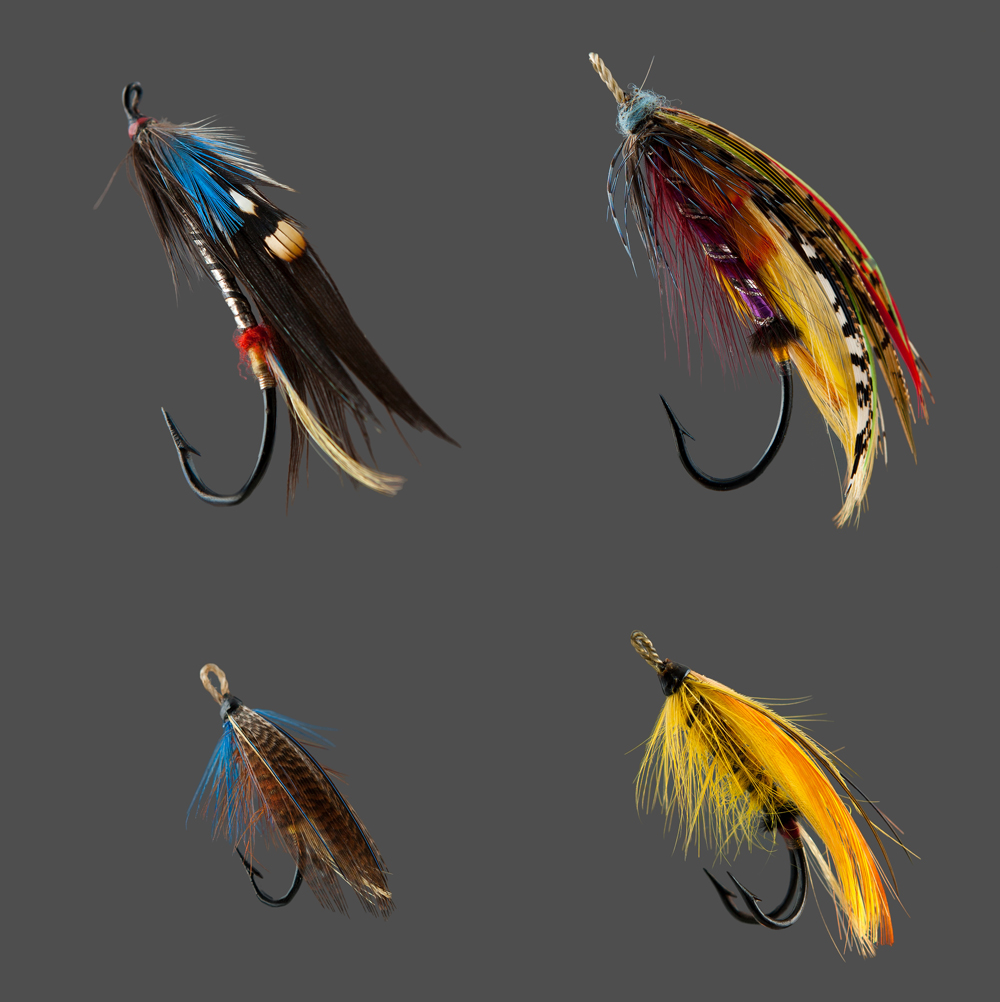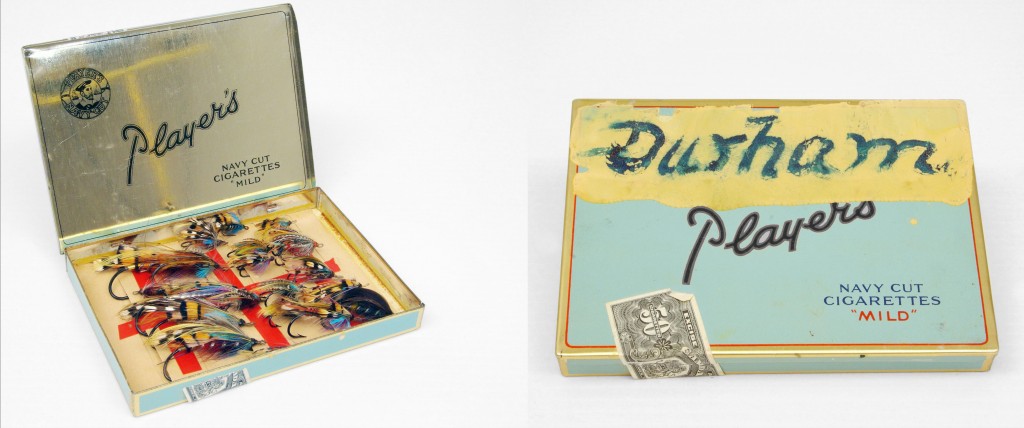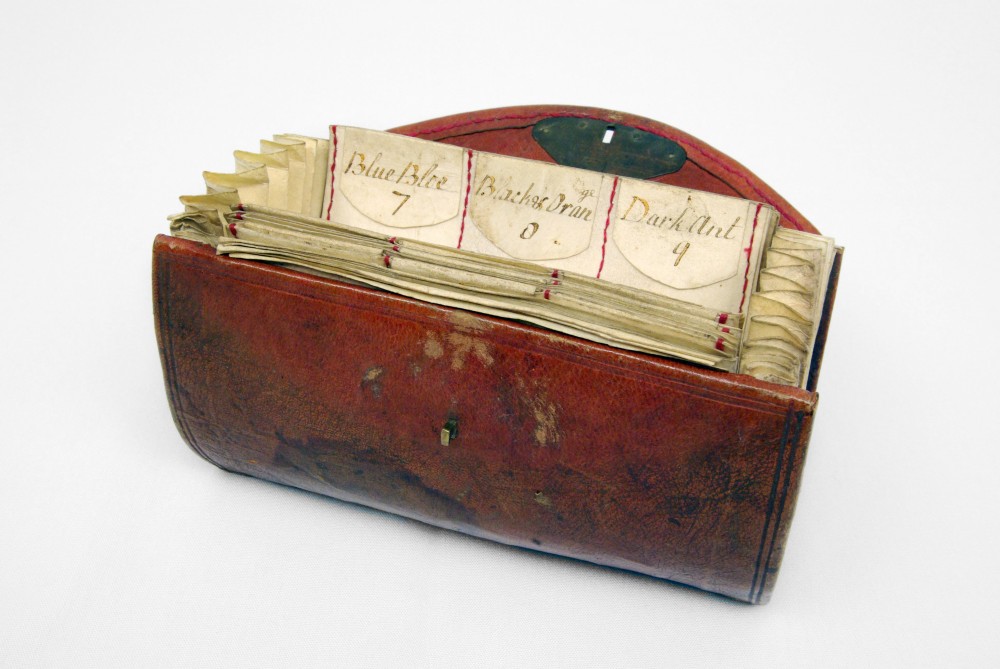Fishing Flies
The Atlantic salmon rises to a fisherman’s fly for reasons unknown. By the time salmon have returned to the rivers of their birth they are no longer eating – so their rising quickly from the bottom of a pool to the surface for a fly is not for food. Most research suggests the salmon is simply disturbed by the fly, and reacts instinctively, just as we shoo a house fly from our arm.

Four Varieties of fishing flies with different shapes and colours: Top left Black Hawk, top right Durham Ranger, bottom left Dusty Miller, bottom right Causapscal.
Generations of fishermen have designed ever more elaborate flies. Initially made from the feathers of native and exotic birds, traditional flies evolved little because of the limited materials available. Synthetic materials transformed the art, offering a new range of materials and colours. This has done nothing to diminish their beauty. Flies are works of art. The craft of the fly tier is a specialized one – and they often compete for the most beautiful and original fly. But the beauty of a fly is no guarantee of success.
The flies in our collection are typical of those used in the early 1900s. Some, like the Durham Ranger, were used on rivers the world over and others, like the Causapscal, were quite specific to the region, imagined and tied by guides in the Gaspésie region.



